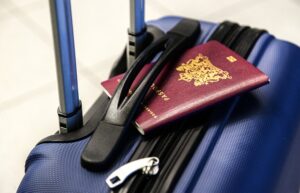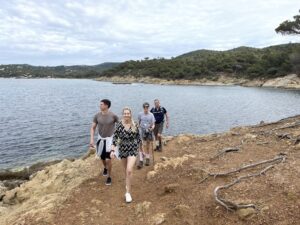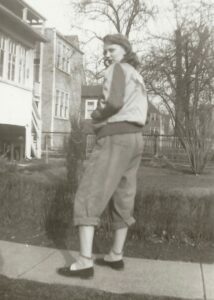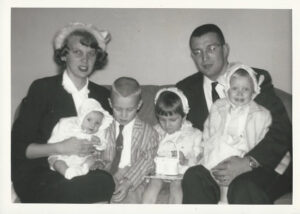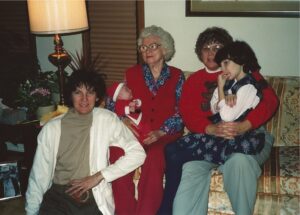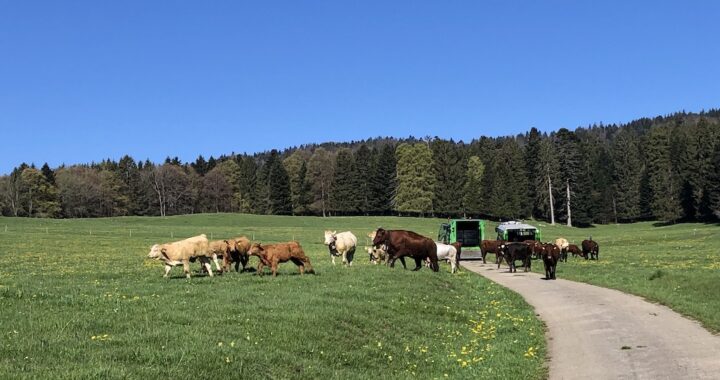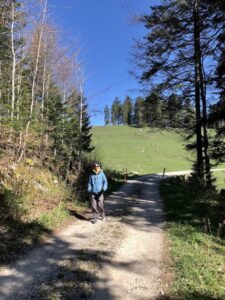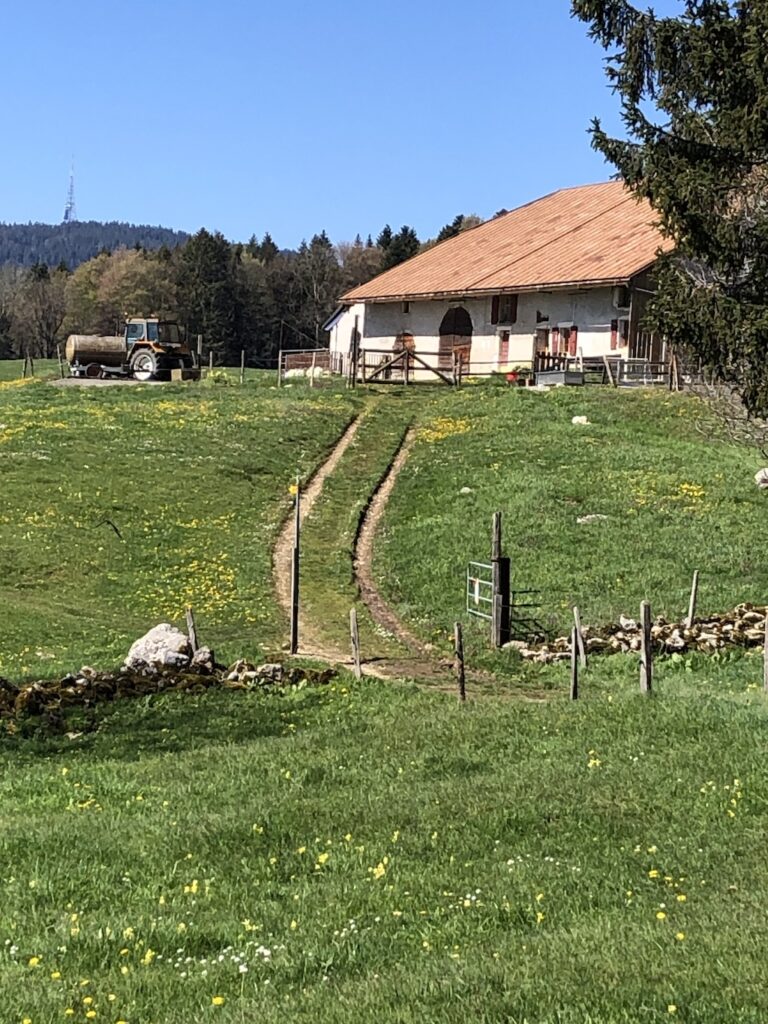 Everyone has a crazy moving house story to share, but can you top this?Changing a domicile, never easy in the best circumstances, becomes an even greater challenge when unforeseen complications arise.
Everyone has a crazy moving house story to share, but can you top this?Changing a domicile, never easy in the best circumstances, becomes an even greater challenge when unforeseen complications arise.
Due to an accident, illness and life-coming-at-you, our long awaited relocation became extremely difficult.
The first snafu arose when our moving company insisted they had only one day available to move us in 2023. Even if the house wasn’t ready by mid October, who are we to argue? We rescheduled 8 previous moving dates. No wonder he wants us out of his storage space. We can’t complain. For two and a half years our mover even stored our car during holidays and shuttled us from the airport.
 As the move-in date approached, our anxiety increased. To de-stress, a few days before moving day, I walked our usual trail next to our Airbnb. The path wound through the woods, then down a steep slope to the train track. Ba-da boom! Whoosh! My feet slipped out from under me; I landed smack on my tailbone, walking sticks flying.
As the move-in date approached, our anxiety increased. To de-stress, a few days before moving day, I walked our usual trail next to our Airbnb. The path wound through the woods, then down a steep slope to the train track. Ba-da boom! Whoosh! My feet slipped out from under me; I landed smack on my tailbone, walking sticks flying.
Luckily, I had my phone, so I called Gerald for help. Poor guy! How many times has he rescued me?
After my first misadventure, he fished me out of a river! My former college teammate, who played ball with me in Germany, always introduced me as, “My friend, who jumped off the cliff with me in France.” (Referring to our career ending car accident cascading off a bridge over the La Meuse outside of Verdun.)
Now I can add skidding down a mountainside to my escapades.
After I picked loose gravel out of my shoulder and forearm, I limped down the mountainside whimpering. When the trailed leveled out by the track, I staggered alongside the little red, two-car train that shuttles commuters up and down the mountain.
In a flashback, I relived my first spinal injury, which my best friend and coach surmised was the onset of my back problems.
“I remember we were playing pick up ball. You stepped in front of a linebacker to take the charge,” Phil recounted, “and hit the court so hard, I heard the crack.”
“`I prayed stay down Pat, stay down,`” he said, “but you popped right back up like one of those inflatable clown, punching bags.”
Does my body have PSTD? Reverberations of the past injury shot through my spine.
At the trail head, Gerald helped me to the car insisting we rush to the emergency room. I refused. I have been in one too many hospitals one too many times.
“Let me call Nic,” I pleaded, crawling in the backseat and curling into the fetal position.
Back at our Airbnb, Gerald texted our son at his chiropractic office in Warwick, England. Nic called back and after I described my fall and the location of pain, he tried to reassure me, “ I can’t diagnose you over the phone. Hopefully it is just bruised. You can wait a day or so to see if the pain worsens; if it’s broken, the treatment is the same. It just takes longer to heal.”
I laid on an ice pack, then took a warm shower while Gerald rushed out to find a donut pillow for me to sit on like Nic suggested.
The next day, feeling worse for the wear, I finagled an urgent appointment with my doctor at a hospital nearby. This sport and rehabilitation specialist, aware of my history, was already treating me for chronic knee and back problems. She checked everything thoroughly and diagnosed, “Contusion et fissure du sacrum.”
As if my accident wasn’t enough was to deal with, Gerald was battling a cough, sore throat, headache and fatigue. We called our daughter for advice.
“I am pediatrician. I treat kids, not geriatrics,” she said and chuckled. “I’d recommend that you start by taking a home Covid test.”
Bingo. Positive. Gerald slept, coughed and moaned for the next three days. Though I tested negative, I plowed ahead with an ever increasingly sore throat, burning trachea, inflamed sinuses and tightness in my chest. Two days later, feeling worse, I retested for Covid. Positive. Again. (And the second time around was worse than the first!)
On moving day, I couldn’t get out of bed, so Gerald headed to the house solo to help the movers figure out where to put stuff.
Moral of this story: in crisis call adult kids for reassurance, regardless of their profession, hearing their voice will give you a lift. And never move a house under the influence of Covid especially with a busted butt!


 Over the decades, I adjusted to dozens of relocations between three foreign countries. From a cot in a German teammate’s apartment, to a studio flat in Paris, to a rustic chalet in Switzerland, “Where Ever I Lay My Hat (That’s My Home.)”
Over the decades, I adjusted to dozens of relocations between three foreign countries. From a cot in a German teammate’s apartment, to a studio flat in Paris, to a rustic chalet in Switzerland, “Where Ever I Lay My Hat (That’s My Home.)” Our holiday was sublime, until mid September. Then our European neighbors-to-be sharing our building set up a zoom video call revealing our condo’s interior. Nothing was done inside since we left 3 months earlier. The only fixture in the shell of our house was a bathtub, now filled with worker’s cigarette stubs, empty bottles and other debris.
Our holiday was sublime, until mid September. Then our European neighbors-to-be sharing our building set up a zoom video call revealing our condo’s interior. Nothing was done inside since we left 3 months earlier. The only fixture in the shell of our house was a bathtub, now filled with worker’s cigarette stubs, empty bottles and other debris. Builders undercut us on every corner trying to save money at our expense. The windows were too small to meet Swiss building requirements. The garage door was smaller than the frame. Insulation was half of what the code required. Plumbing in one bathroom was built outside the walls. The stairs were crooked. And the retaining wall to prevent the mountain from tumbling down on us hasn’t been started.
Builders undercut us on every corner trying to save money at our expense. The windows were too small to meet Swiss building requirements. The garage door was smaller than the frame. Insulation was half of what the code required. Plumbing in one bathroom was built outside the walls. The stairs were crooked. And the retaining wall to prevent the mountain from tumbling down on us hasn’t been started. It could be worse. The Greek countryside is dotted with half-finished house frames without windows, doors, walls.
It could be worse. The Greek countryside is dotted with half-finished house frames without windows, doors, walls.


